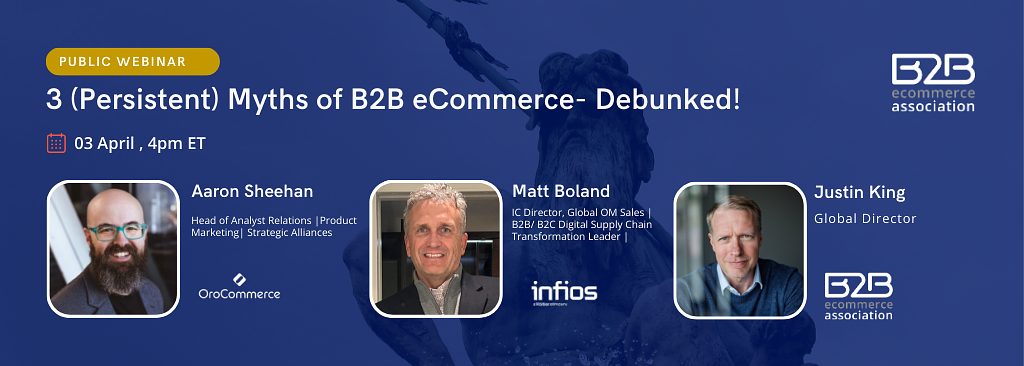If a customer landed on your site today, what would your search experience tell them?
That you’re an expert? Or that you’re winging it?
Faceted search has become essential to the B2B buyer’s digital experience. And while many sites technically offer it, the strategy behind it is often an afterthought, if it exists at all.
Let’s be honest: in B2B, faceted search isn’t just helpful. It’s a digital litmus test of whether or not you actually understand the products you sell.
Why B2B Search is Different (and Way Harder)
In B2C, products are often built for broad appeal. A “large” T-shirt might fit 50 different people in completely different ways. But in B2B? Product discovery is an exercise in precision.
Buyers are solving for highly specific, technical needs. The difference between two SKUs might be one out of twenty attributes. Think voltage. Material. Thread type. Compliance spec.
The job of faceted search is to narrow millions of SKUs into one perfect answer. When that works, buyers feel confident and convert quickly. When it doesn’t, they leave, usually for a competitor that looks like they actually understand the product.
Introducing the Faceted Search Maturity Model
To help you assess where your experience stands today, here’s a simple five-level model we use with B2B clients:
Level 1: Global Facets
Universal filters like price, availability, and brand are present. Nothing’s tailored to the product category. Better than nothing, but it doesn’t help a buyer narrow down technical criteria.
Level 2: Category Raw Dump
All attributes for a given product category are exposed as filters, often straight from your PIM or ERP. It’s cluttered, inconsistent, and overwhelming. You’re telling users: good luck out there.
Level 3: Category-Aware
Your filters now use only the attributes that make the most sense to product selection. You’ve curated the most relevant attributes for industrial fans versus electrical wire. You’re showing signs of understanding how buyers evaluate different product types.
Level 4: Data-Informed
You’re using analytics to refine filter order, naming, and even inclusion based on usage data. You’ve started to remove filters that don’t help. This is where conversion rates start to climb.
Level 5: Customer-Validated
You’ve tested built processes that incorporate customer behavior and automatically reflect those learnings in the CX. Filters now reflect how buyers think, not just how your database is structured.
💡 Challenge: Where does your site land today? And more importantly, where does your customer think it lands?
What Bad Faceting Actually Looks Like
Let’s make it real. Here are a few examples we’ve seen (names withheld to protect the guilty):
- A hardware distributor shows 16 variations of voltage, but offers no way to filter by application or compatible equipment. Great if you’re an electrical engineer. Terrible for a buyer under time pressure.
- A safety supply catalog offers filters for every attribute in their PIM, including internal-only tags like “discontinued date” and “pricing tier.” That doesn’t just confuse customers, it erodes trust.
- A tools supplier limits all category filters to brand, price, and “in stock”, because those are the only global attributes they could easily apply across categories. Users click “Filters,” and then… nothing happens.
Why This Happens (and Who Owns It?)
Faceted search often ends up in no man’s land:
- IT owns the technical implementation
- Merchandising owns the product data
- Marketing owns conversion metrics
- UX isn’t even looped in
And because it’s “just filters,” it rarely gets strategic attention. But it should, because faceted search is a core signal of expertise. It tells your customer, “We understand this category. We speak your language.”
Want to be a source of confidence for your buyers? Start with the filters they use to make a decision.
Tying It All Back to Revenue
Faceted search doesn’t just make the experience smoother. It directly impacts business metrics:
- Faster time to product = lower bounce rates
- Improved product confidence = higher conversion
- Better match between buyer intent and results = fewer returns and reorders
- Confidence and credibility = higher repeat usage
And when buyers return to your site because it made their job easier, that’s real adoption, and the core of long-term customer growth.
Your Next Step: Run a Faceted Search Diagnostic
Use this checklist to evaluate your current state:
- Do filters vary by product category?
- Are you using data to rank/sort filters based on usage by users?
- Have you removed filters that aren’t helpful?
- Do your filters reflect product knowledge or just your backend schema?
- Have you tested your filtering experience with actual customers?
If you’re not answering “yes” to most of these, it’s time to invest in a strategic rework.
Final Thought
In B2B, your buyers are not browsing for fun. They’re doing their job.
If your faceted search helps them do that job faster, easier, and with more confidence? They’ll be back. If not, they won’t.
Faceted search might be technical in execution. But it’s strategic in impact.
It’s time to treat it that way.









